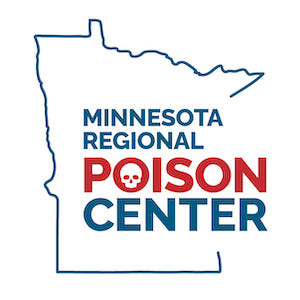Suicide Prevention
Are You or Someone You Know in Crisis?
You are not alone, and help is available. Contact the 988 Suicide and Crisis Lifeline if you are experiencing mental health-related distress or are worried about a loved one who may need crisis support. Connect with a trained crisis counselor. 988 is confidential, free, and available 24/7/365.
- Call or text 988
- Chat at 988lifeline.org
- Visit the 988 lifeline website for more information.
- Veterans Crisis Line: 1-800-273-8255 or send a text message to 838255
Suicide Facts
- There are over 700 suicides each year in Minnesota. (MDH)
- Over the last two decade, adult suicide rates have increased. (MDH)
- In 2022, suicide was among the top 9 leading causes of death for people ages 10-64. Suicide was the second leading cause of death for people ages 10-14 and 25-34. (CDC)
- Poisoning is the most common method of suicide for females. (CDC)
Population Groups Most Affected
- Suicide among males is nearly four times higher than among females. Male deaths represent almost 80% of all US suicides. (CDC)
- Suicide is the second leading cause of death for persons age 15 to 34 in the US. (CDC)
- The highest suicide rates in the US are among Whites, American Indians and Alaska Natives. (SAVE)
Common Warning Signs
Sometimes suicide can seem sudden, but in many cases, there are signs and symptoms that someone is considering it. The signs may appear in conversations, through their actions, or mood. Knowing the warning signs for suicide and how to get help can help save lives. Signs that someone is thinking about suicide may include:
Talking about:
- Wanting to die
- Great guilt or shame
- Being a burden to others
Feeling:
- Unbearable emotional or physical pain
- Empty, hopeless, trapped, or having no reason to live
- Extremely sad, more anxious, agitated, or full of rage
- Feeling like they are a burden to others
Changes in behavior or mood:
- Planning or researching ways to kill themselves, such as searching for lethal methods online, stockpiling pills, or buying a gun
- Withdrawing from family, friends, or community
- Saying goodbye to friends and family
- Giving away prized possessions
- Putting affairs together, such as making a will
- Taking dangerous risks that could lead to death, such as driving extremely fast
- Increased alcohol or drug use
- Changes in eating or sleeping patterns
Five Action Steps for Helping Someone in Emotional Pain or Crisis
- Ask: Asking the question “Are you thinking about suicide?” communicates that you’re open to speaking about suicide in a non-judgmental and supportive way. Listen carefully and learn what the individual is thinking and feeling.
- Be There: This could mean being physically present, speaking with them on the phone, or any other way that shows support for the person at risk. Being there for someone with thoughts of suicide is lifesaving.
- Keep Them Safe: Reducing a suicidal person’s access to lethal items or places is an important part of suicide prevention. While this is not always easy, asking if the at-risk person has a plan and removing or disabling the lethal means can make a difference.
- Help Them Connect: Connecting them with ongoing supports such as the 988 Lifeline and resources in their community can help establish a safety net for those moments they find themselves in a crisis. Save the 988 Suicide & Crisis Lifeline number (call or text 988) in your phone so they’re there if you need them.
- Follow Up: Staying in touch after a crisis or after being discharged from care can make a difference.
Suicide Can Be Prevented
Below are strategies that can help save lives.
- Call the 988 Lifeline if you’re experiencing:
- thoughts of suicide
- mental health or substance use crisis
- any other kind of emotional distress
- Keep prescription and over-the-counter medicines locked in a safe place
- Know what medicines you have and how much you have of each
- Limit the amount of pills someone has access to in the home
- Discuss medicine safety with teens who self-administer medication
- Dispose of expired or unused medicine at take back events, pharmacies, and local police stations—Find a location near you
- Store alcohol and other potential poisons in locked cabinets
- Educate children and teens about safe alcohol use
- Be aware of hidden alcohols in other household products (mouthwash, hand sanitizer, rubbing alcohol, etc.)
What is Depression?
Depression is a recognizable and treatable illness. Treating depression helps people lead happier, healthier lives. It can also save lives. Depression is a medical illness of the brain that affects moods, thoughts, feelings, behavior and physical health. Unlike the blues, depression lasts longer than a couple weeks and won’t go away with positive thinking or determination. Depression needs treatment. Treating depression is the most effective way to prevent suicide.
